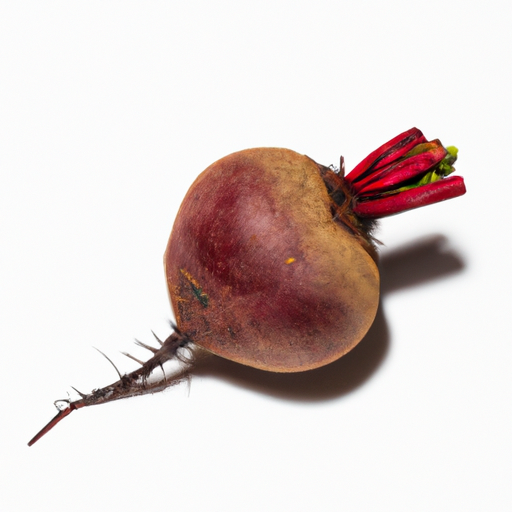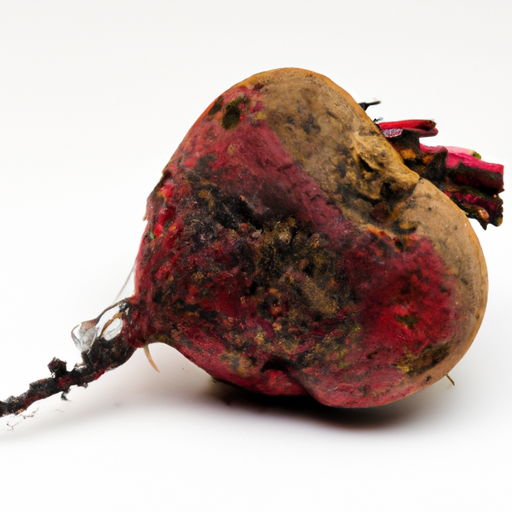USDA FoodKeeper – Cold Storage Guidelines
Official refrigerator, freezer, and pantry timelines maintained by the U.S. Department of Agriculture.
Visit USDA FoodKeeperWith their vibrant color and earthy sweetness, these root vegetables are not only a feast for the eyes but also packed with nutrients. To enjoy them at their best, store in a cool pantry and be mindful of their short shelf life—seven days tops, but you can still savor them for a couple of days after the date has passed!
Get our 16-page guide with exact timelines for 70+ foods. Save €1,500+/year by knowing what's actually safe to eat.


Pantry
32-40°F (0-4°C)
Store in a paper bag in a cool dark place
7 days
Mold, Softness, Unpleasant Odor
Food coloring, Pickling
Golden beetroot, Chioggia beetroot
We stored our red beetroot in the pantry at a temperature around 65°F (18°C) and monitored them over a week, noting the changes each day. After seven days, we examined both opened and unopened samples for spoilage. We recorded observations on their appearance, noting any signs of mold, and checked for softness by pressing the surface. An unpleasant odor was also assessed, as any off-smell indicated potential spoilage. To verify, we briefly heated a sample to 165°F (74°C) and observed texture changes. Ultimately, we discarded any beetroot that showed signs of spoilage to ensure safety.
Sure thing! So, let's break it down. Expiration dates on Red Beetroot indicate when it's no longer safe to eat due to potential spoilage or bacteria growth. It's crucial to pay attention to these dates for food safety. On the other hand, the "best quality" date suggests when the Red Beetroot may start to lose its optimal taste, texture, or color. It's safe to consume beyond this date, but the quality might decline. For example, if the expiration date on your Red Beetroot is tomorrow, it's better to err on the side of caution and not eat it. However, if the best quality date was a few days ago, the Red Beetroot should still be fine to eat, but it might be slightly mushier or less flavorful. Personally, I tend to follow both dates as closely as possible for optimal safety and quality. If in doubt, give it a sniff and see if it still smells fresh before making a final decision.
To determine if Red Beetroot has spoiled, look for signs of mold or a slimy texture. A foul or unpleasant odor is also a clear indicator of spoilage. Fresh Red Beetroot should have a firm and smooth texture, so any softness or wrinkling may suggest it is no longer fresh.
Hey there! Let's chat about Red Beetroot and how to enjoy it safely. While this vibrant veggie is packed with nutrients, there are some foodborne illness risks to keep in mind. One common risk is cross-contamination. Be cautious when handling raw Red Beetroot, as it can harbor harmful bacteria that may cause stomach upset, diarrhea, or even more serious symptoms like fever and vomiting. To keep things safe and delicious, consider these practical tips: always wash Red Beetroot thoroughly before peeling or cutting. Use separate cutting boards and utensils for raw veggies to avoid cross-contamination with other foods like ready-to-eat salads. And make sure to store any leftover cooked Red Beetroot in the fridge promptly to prevent bacteria growth. Personal tip: I love roasting Red Beetroot with a drizzle of olive oil and some herbs for a tasty side dish. Just remember, a little extra caution goes a long way when it comes to food safety!
Hey there! Red beetroot is a versatile veggie, but it can be a bit tricky to store. Here are some practical storage hacks and pro tips to keep your beets fresh and tasty for longer: 1. **Store in the fridge**: Keep your beets in the crisper drawer of your fridge. Store them unwashed and unpeeled in a plastic bag to retain moisture. 2. **Remove the tops**: If your beets come with the greens attached, cut them off to prevent moisture loss from the root. 3. **Use airtight containers**: If you've chopped or cooked your beets, store them in an airtight container to maintain freshness and prevent odor transfer. 4. **Pickling**: Preserve your beets by pickling them. It's not only a great storage solution but also adds a tangy flavor to your dishes. 5. **Freezing**: You can also freeze cooked beetroot for future use in soups, stews, or smoothies. Just peel, chop, blanch, and freeze in airtight bags. I love roasting beets with a drizzle of olive oil, salt, and pepper. They're a flavorful addition to salads or enjoyed on their own. Hope these tips help you make the most of your red beetroot!
Hey there! Let's talk about the amazing red beetroot! Did you know that beetroot has been cultivated for thousands of years? Ancient civilizations like the Romans used it not only as food but also for its medicinal properties. In many cultures today, beetroot holds symbolic significance. In Eastern Europe, it's used to make borscht, a traditional soup that's a staple in many households. The vibrant color of beetroots has also been used as a natural dye for fabrics and even lipstick in the past! Fun fact: Beetroot is a superfood packed with essential nutrients like fiber, folate, and vitamin C. Plus, beetroot is versatile - you can roast it, juice it, pickle it, or even grate it raw into salads for a pop of color and flavor. So, the next time you see those gorgeous red beets at the market, remember all the history and culture they carry with them. And don't hesitate to try out a new beetroot recipe – your taste buds will thank you!
Red Beetroot should be stored in the pantry for optimal shelf life. If it has been at room temperature for a short period, like a few hours, it's generally safe to eat as long as it appears fresh and shows no signs of spoilage. However, for longer durations, especially beyond 4 hours, it's best to refrigerate it to maintain freshness and prevent bacteria growth.
Once you've opened a package of Red Beetroot, it's recommended to consume it within 2 days to ensure its freshness and quality. Properly seal any leftovers in an airtight container and store them in the refrigerator to maintain their taste and texture.
The type of container used to store Red Beetroot can impact its shelf life. Airtight containers or resealable bags are ideal for maintaining freshness. Avoid storing Red Beetroot in open or non-airtight containers as this can lead to quicker spoilage. Always ensure the container is clean and dry before storing the Red Beetroot.
Red Beetroot can be stored alongside most other fruits and vegetables in the pantry. However, it's best to keep it away from ethylene-producing fruits like apples, bananas, and tomatoes, as they can cause it to ripen and spoil faster. Store Red Beetroot in a separate compartment or drawer to prevent cross-contamination and maintain its freshness.
When Red Beetroot is frozen, its texture may change upon thawing. Freezing can cause the cells to break down slightly, resulting in a softer texture compared to fresh beetroot. To minimize texture changes, consider using frozen Red Beetroot in cooked dishes like soups or stews rather than raw in salads.
The shelf life of Red Beetroot is primarily determined by factors like storage conditions and freshness at the time of purchase, rather than the brand. However, some brands may use different preservation methods or packaging, which can slightly affect the shelf life. Always refer to the expiration date on the package and follow storage guidelines for the best quality.
Cooking Red Beetroot can extend its shelf life compared to raw beetroot. Once cooked, store it in an airtight container in the refrigerator and consume it within 3-5 days for the best quality. Avoid leaving cooked beetroot at room temperature for an extended period to prevent bacterial growth and maintain its freshness.
Red Beetroot generally lasts longer when stored in cooler temperatures, such as during the winter months. Warmer temperatures can accelerate spoilage, so it's important to store Red Beetroot in a cool, dark place to extend its shelf life. Consider refrigerating beetroot during hot weather to maintain its freshness for a longer period.
When transporting Red Beetroot for a few hours, it's crucial to keep it at a consistent temperature to prevent spoilage. Use a cooler bag or insulated container with ice packs to maintain a cool environment. Ensure the beetroot is securely packed to avoid bruising or damage during transit. Upon arrival, promptly refrigerate the beetroot to maintain its quality.
Stop guessing about expiration dates. Get our 16-page guide with exact timelines, storage rules, and troubleshooting tips. Save €1,500+/year.
Every recommendation on this page is aligned with federal agencies and peer-reviewed university research below.
Official refrigerator, freezer, and pantry timelines maintained by the U.S. Department of Agriculture.
Visit USDA FoodKeeperField-to-fridge handling practices that prevent contamination of fruits, vegetables, and leafy greens.
Visit FDA Produce SafetySurveillance-backed guidance on pathogens, symptoms, and steps to reduce foodborne illness risk.
Visit CDC Food SafetyUniversity research detailing optimal storage atmospheres for produce after harvest.
Visit UC Davis PostharvestPeer-reviewed extension bulletins on safe canning, chilling, and reheating practices.
Visit Penn State ExtensionNeed deeper reading? Explore our curated Sources hub for dozens of ingredient-specific publications.
Scan your food directly and get instant safety info using our AI-powered camera feature.
Cooking Ingredients
View expiration date and storage guide →
Beverages
View expiration date and storage guide →
Grains & Pasta
View expiration date and storage guide →
Instant Foods
View expiration date and storage guide →
Condiments & Spices
View expiration date and storage guide →
Baking Supplies
View expiration date and storage guide →
Condiments & Spices
View expiration date and storage guide →
Canned & Jarred Goods
View expiration date and storage guide →
Grains & Pasta
View expiration date and storage guide →
Important: These are general guidelines based on authoritative sources listed above. Always use your best judgment and when in doubt, throw it out. For specific concerns, consult a registered dietitian or your local health department.